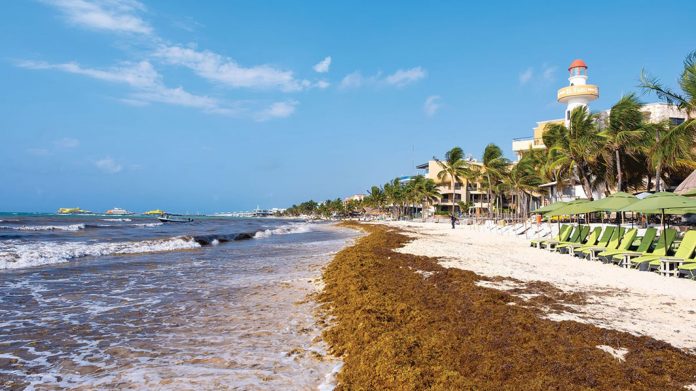
This year is shaping up to be a major Sargassum year, as the Caribbean is likely to see increased quantities of seaweed throughout the upcoming months.
A report published by Marine Ecologist Ruleo Camacho, suggests that this year will see more seaweed in the area.
Over the past 13 years, Sargassum has wreaked havoc on seaside businesses and disrupted the livelihoods of fisherfolks in Antigua and Barbuda. Hotels have struggled to manage the influx of seaweed, resorting to heavy equipment to clear beaches for guests. Meanwhile, fishermen have had to suspend their activities due to the overwhelming presence of Sargassum.
And the situation is not looking any better for this year. Recent findings from the University of South Florida Optical Oceanography Lab indicate a surge in Sargassum concentrations, particularly in the Central Western Atlantic and the Caribbean region. Satellite images show a notable increase in Sargassum quantities, with the eastern Caribbean Sea being particularly affected.
Meanwhile marine biologist Ruleo Camacho says the amount of Sargassum heading towards the region is already surpassing previous years’ levels.
According to the latest report, total Sargassum amount continued to increase to about nine million metric tons, representing the second highest amount for the month of February. It has since decreased to around 6.5 million metric tons in March.
Camacho however warns that the concentration of sargassum is likely to increase with the bulk of the seaweed is expected to hit the eastern Caribbean Island chain.
In March 2024 alone, the amount of Sargassum exceeded 75% of all previous recorded years. Camacho advises individuals to find safe ways to manage the seaweed and suggests identifying sustainable solutions to the problem.
While Sargassum serves as a vital habitat for marine life, it poses a threat once it reaches the shorelines. The seaweed may contain harmful heavy metals such as arsenic and cadmium, which could endanger both humans and animals.
